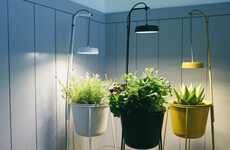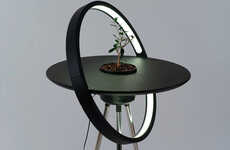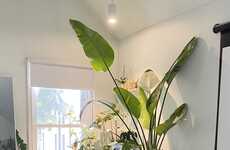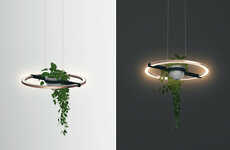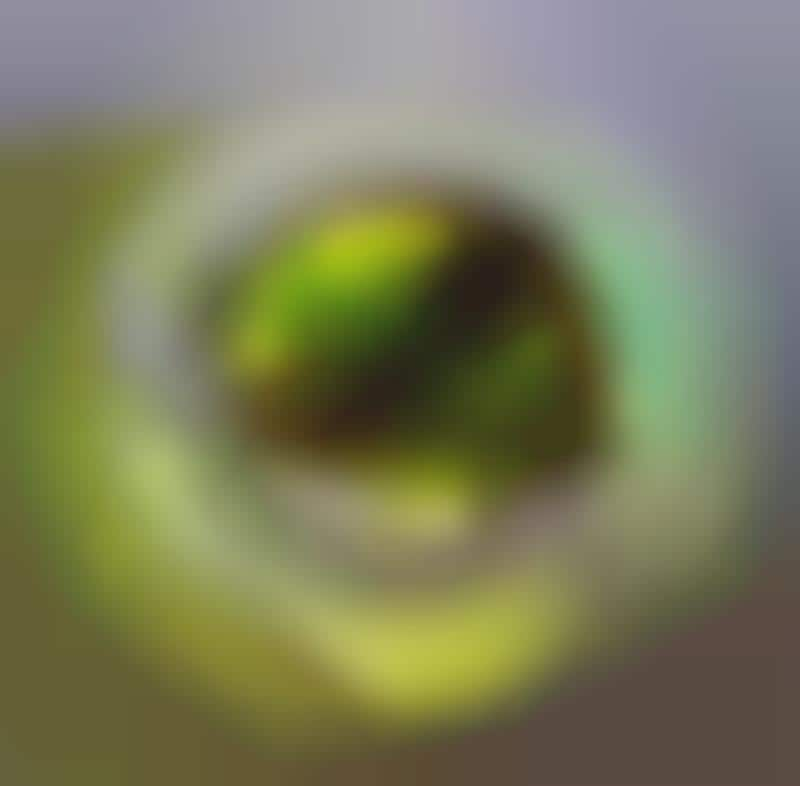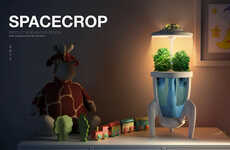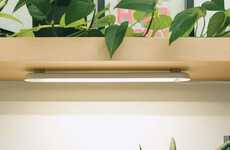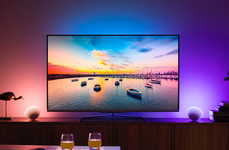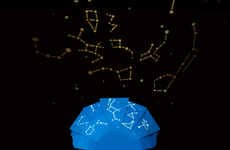
The 'H20 Light' Reflects and Directs Light to Aid Plant Growth
Margot Krasojevic — December 11, 2017 — Eco
References: margotkrasojevic.org
The H20 Light is designed to reflect and direct light into plant stems, aiding plant growth. The striated configuration expands and wraps itself around different plant sizes.
The prototype is 3D printed in nylon, however, its creators are conducting tests to print using bamboo, which is environmentally friendly as it is a biodegradable material—the major problem with bamboo is its crude nature, it is yet to be refined in order to print detailed and complex shapes, this is a work in progress.
LED light strip lines the underside of the printed deflector, which is activated when the water sensor is exposed to water, in this case when the soil or plant is watered. A simple electronic circuit is attached to the LED strip, which uses the deflector to disperse water around the plant, yet also houses the electronic sensor as part of the striated design element, the sensors sit in the earth. The light strength fades as the plant dries over time, acting as an indicator that the plan needs to be watered. LEDs have a variety of wavelengths, they are controlled by a microprocessor that can change the color and in turn, wavelengths. Different wavelengths offer the plants different benefits from seed germination, plant growth, dormancy and stem growth, the wavelengths cater to the type of plant and the stage of its plant cycle.
The prototype is 3D printed in nylon, however, its creators are conducting tests to print using bamboo, which is environmentally friendly as it is a biodegradable material—the major problem with bamboo is its crude nature, it is yet to be refined in order to print detailed and complex shapes, this is a work in progress.
LED light strip lines the underside of the printed deflector, which is activated when the water sensor is exposed to water, in this case when the soil or plant is watered. A simple electronic circuit is attached to the LED strip, which uses the deflector to disperse water around the plant, yet also houses the electronic sensor as part of the striated design element, the sensors sit in the earth. The light strength fades as the plant dries over time, acting as an indicator that the plan needs to be watered. LEDs have a variety of wavelengths, they are controlled by a microprocessor that can change the color and in turn, wavelengths. Different wavelengths offer the plants different benefits from seed germination, plant growth, dormancy and stem growth, the wavelengths cater to the type of plant and the stage of its plant cycle.
Trend Themes
1. 3d-printed Light Terrariums - Opportunity for creating customizable and efficient light terrariums using 3D printing technology.
2. Environmentally-friendly Materials - Potential for developing refined bamboo-based materials for 3D printing, offering a biodegradable alternative.
3. Smart Plant Growth Systems - Growing demand for innovative solutions like the H20 Light that combine sensors, electronic circuits, and LED technology to enhance plant growth.
Industry Implications
1. 3D Printing - Expanding applications of 3D printing in the terrarium industry for creating light-enhancing structures.
2. Sustainable Materials - Growing interest in the development and use of eco-friendly materials like refined bamboo in various industries, including 3D printing.
3. Smart Agriculture - Increasing opportunities for integrating sensor-based systems and LED technology into agricultural practices to optimize plant growth and resource usage.
6.7
Score
Popularity
Activity
Freshness

